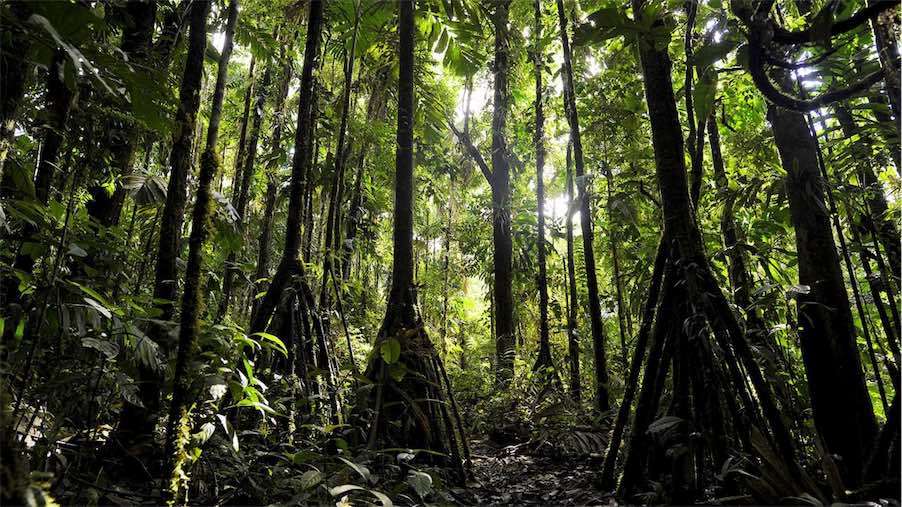Nature Knows: Adaptation
There is a tree that is known as the “walking tree” because many say that moves over time through the forest. The story is that the roots of the tree grow wildly and widely, and the tree’s energy systems use those exploring roots to identify the soils with the nutrients most appropriate for continued tree success. The roots that are engaged with soils that are beneficial grow more strongly, while the roots experiencing soils devoid of helpful nutrients die off. Over time, the tree itself re-centers within the complete root system, slowly moving across the earth, a centimeter or two a year.
Fascinating, (and debated).

Yet this is a glorious storified example of how Nature understands and applies adaptation. Some changes take generations and are tied to evolutionary shifts, such as camels having nostrils that close to protect from blowing sands in the arid desert, and human cultures that have physically evolved to handle exceptionally high altitudes. Other are shorter responses to more immediate situations, such as certain frogs and fish that change sex as needed to maintain the population level. Also succulents that store water, adapting to dry conditions.
Interestingly, the human species keeps creating change, yet seems to be the one most resistant to change. Adapting is a challenge for us. Hence the massive push-back on the science that is revealing and predicting the climate peril we are in, and the shifts we will be facing.
The mythical example of the walking tree led one researcher, Mitchell Resnick, to develop a process to assist in change and in project development, called TREE. The acronym stands for Test Randomly, Evaluate, and Elect, and it is a process ideal for almost any project or business plan or even conversation.
- Test Randomly – we don’t know what is important to a building project, for example, until we exhaustively reach out and gain insights from many perspectives (users, builders, cleaners, community…).
- Evaluate – we then take the inputs and assess them for what we can learn from then and how the information applies or does not apply to the work at hand.
- Elect – we can then choose what to pursue and why, and we can do this with confidence and a solidified conviction that will help to shepherd the work to completion.
I had a boss once who said a leader doesn’t need inputs because she should be able to make her own decisions. She made it very clear that gaining the opinions and expertise of others was actually an illustration of weakness. My response – a leader who is not making use of a wide variety of inputs is not a leader, but a scared person with a title.
…a leader who is not making use of a wide variety of inputs is not a leader, but a scared person with a title.
In a time of dramatic and accelerating change we can learn from Nature how to adapt, and how to adapt well. We need to take in vast quantities of information, from perspectives beyond our own. We can process these inputs and relate them to our situation to learn from them, and then apply that learning.
TREE can be used for little decisions, such as my trying to find the right toothpaste tabs so I can avoid plastic toothpaste tubes. I tried one, found it ‘meh’, did some research, read reviews, asked some friends for their experiences, and have now tried another, which is much better. I may try a few more, because I’ve learned things I didn’t know, such as most toothpaste tabs don’t have fluoride. Is this good or bad? I need to evaluate.
And TREE can be used, certainly, for bigger systemic decisions such as job searches, project designs, and decisions about what college to attend or where to move to. The key is to reach for broad inputs and then commit to evaluating the info before choosing a direction.
It is very interesting to me that our society, our world, has more access to more insights and perspectives than ever before, yet we often allow social media, and apps such as Pandora and Spotify, to select the things we like, on our behalf. Yes, with input from us, but potentially in an ever-restrictive search pattern. To get the most out of this access, we can each push those systems to broaden the exposure, connections, and possibilities.

Because, above all, this is an iterative state of being.
We are not tasked with doing an adaptation and then being done with it, but with continually re-assessing what is working and what is not, as Nature does every day with her systems and solutions. There is no “done”. We are engaging in an incredible dance between living in the moment and understanding that this moment will bow to the next moment, for all time.
Happy adaptation, on your path 2bgreener,
Jodi
1 Like this post (no login required)
There’s massive opportunity here for technology to monitor many aspects of the environment and then to analyze the data… and AI to interpret and make recommendations. Always updating as it learns more from the feedback loops.
I agree. There isn so much knowledge from experiential learning out there that we are JUST starting to recognize, and we are not yet purposefully seeking.
SWe need you, and me, and about 2 billion other people working on this!
❤